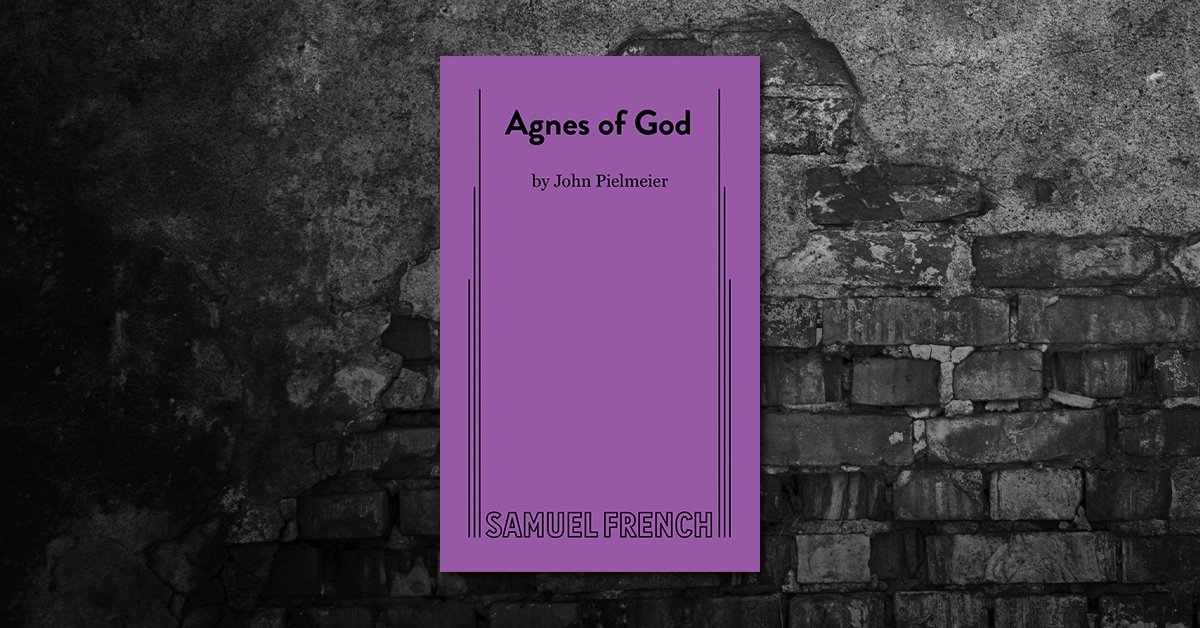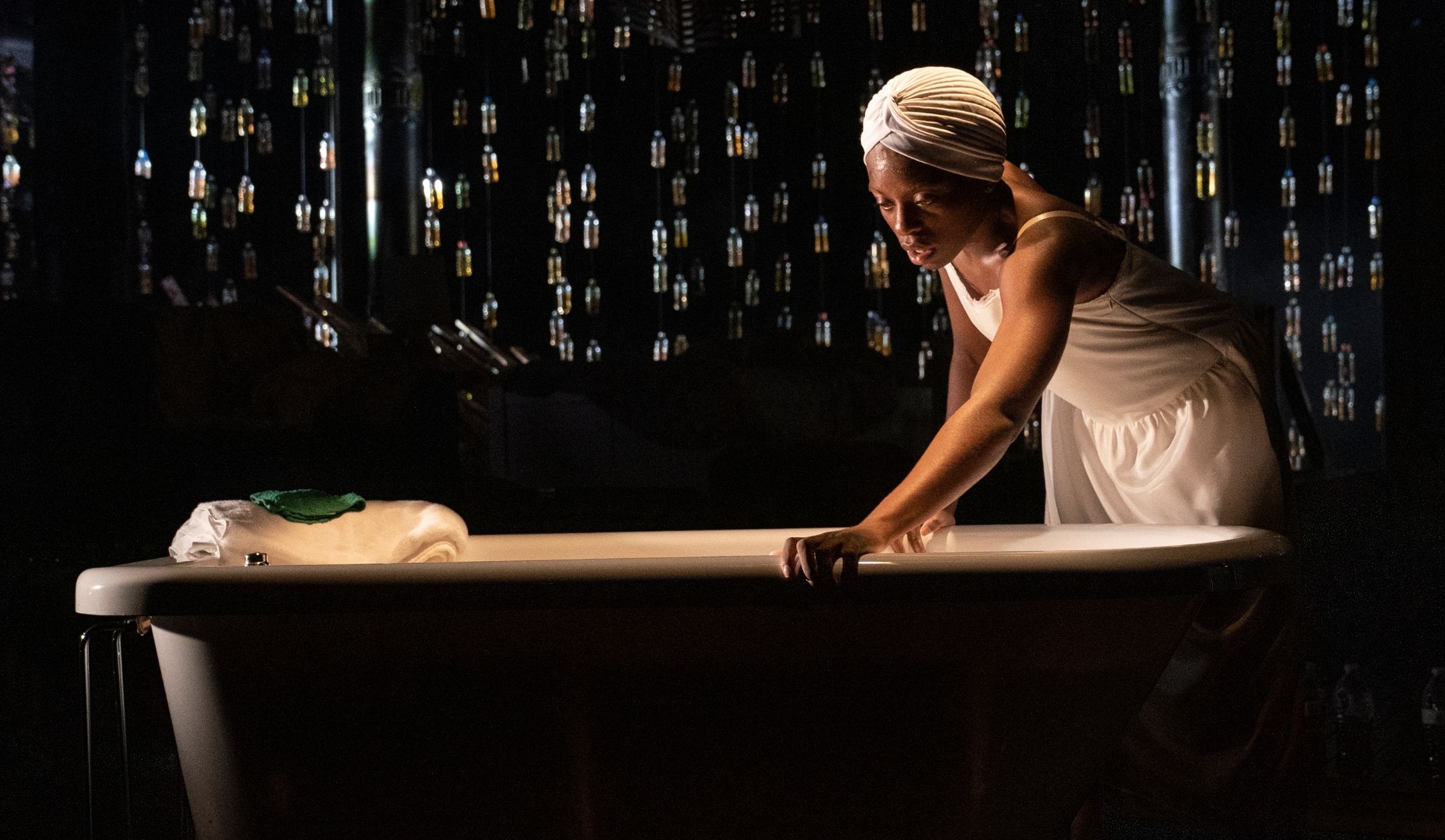
Agnes of God, John Pielmeier’s forceful, thought-provoking drama about a novice accused of murdering her newborn, premiered on Broadway at the Music Box Theatre on March 30, 1982. The taut, compelling three-character play – a gripping and dynamic showcase for strong female actors – was a hit on Broadway and on film, earning Tony and Oscar accolades.
In the forty years since its Broadway premiere, Agnes of God has been presented in thousands of celebrated productions in theatres all over the world, remaining as powerful as the day it was written. We caught up with the playwright to discuss the show’s creation, themes and enduring resonance.
For those who don’t know the play, how would you summarize Agnes of God?
It’s a play that questions belief and disbelief, questions goodness and sanctity, questions guilt and innocence; in short, it’s a play that questions answers and celebrates questions. This is all strung on a clothesline of a murder mystery: a nun gives birth, a baby is strangled – who murdered the child, and why?
Is it true that the events of the play were inspired by an actual incident involving a Sister Maureen Murphy of Rochester, New York?
It was inspired in the loosest sense of that word. I saw a headline in The New York Post or The Daily News – I can’t remember which one – and the headline read “Nun Kills Baby.” That’s all. I did not research this case; I never even heard the name of the nun until years later. There are, it turns out, a few coincidental similarities between the play and the incident, but none were intentional.
Agnes has “the voice of an angel,” and music plays an important role in the play. Why was this important to you?
Music plays an important role in many of my plays. Agnes was just the first. I’m not sure why I love it so. Perhaps it’s because music is another way of communicating emotion – pure emotion – and can embrace a scene and an audience almost as a mother holds a child as she guides it in the direction she wants it to travel, to grow.
Mother Miriam Ruth is a former smoker, and she occasionally swears, defying many people’s expectations of a Mother Superior. Did you know nuns like her?
I was taught by nuns for the first twelve years of my schooling, and in high school I got to know a few nuns fairly well. These were the most educated women in the town I grew up in; most of the adult lay-women I knew ended their education after high school. I saw some of these nuns “behind the scenes” in their respective convents, laughing with each other, living lives beyond their lives as teachers. They were intelligent, and wise, and relatively worldly. (A footnote: the principal of my grade school, a Sister of Charity whom I admired, was named Sister Miriam Ruth.)
Faith and science are in perpetual conflict in this play. Doctor Martha Livingstone says, “My religion, my Christ, is this. The mind.” Mother Miriam Ruth says, “The wonder of science is not in the answers it provides but in the questions it uncovers.” Can you talk a little about the play’s treatment of science and faith?
I don’t know that I can say anything more than what those two women say. My favorite scene in the play is the one at the end of Act One, between Mother Miriam and Doctor L. This to me is the heart of the piece, the foundation on which the entire evening is based. It’s nothing more than a collection of observations, of questions asked that can never be fully answered.
Has the content of the play changed at all over the past forty years?
I did a minor re-write a few years ago. (Concord currently publishes this re-write.) I updated the smoking references and made a few adjustments and cuts in Act One. Act Two is pretty much the same.
The play has just three characters… a holy trinity. Why?
I’ve always been fond of small-cast plays; I felt no need for any other characters. The “holy trinity” was accidental. I think.
Agnes, Miriam and Martha are all women. Is it true that you first envisioned the psychiatrist as a man? What made you change Livingstone to a woman?
Yes, I did first imagine Livingstone as a man, but only for a very short time before I began the actual writing. At that point in my creative life, I was struggling with writing female characters, and so I thought if I made the doctor a woman I would have to face this challenge squarely.
The play wrestles with big ideas: Faith. Goodness. Mental and spiritual health. Which came first, the ideas or the narrative?
The ideas came first. I’d been wanting to write a play that explored these themes, but I felt I needed a kind of plot-centered “clothesline” on which to hang them. The newspaper headline gave me that clothesline.
Miriam says, “Catholicism is not on trial here.” Some might argue it’s at least under serious questioning. How would you respond to that?
Of course it’s on trial. I admire faith in others and I question it in myself. I wanted to admire and question faith in the play too. Naturally I centered on the faith in which I was raised. I might add that the play has always been embraced by priests and nuns. The only negative response was when the bus-and-truck tour was kicked out of Scranton by the bishop there. Later that bishop was “promoted” to the archdiocese of New York – we know him as Cardinal O’Connor.
Many actresses have played these roles, from Geraldine Page, Elizabeth Ashley and Amanda Plummer in the original Broadway production to Anne Bancroft, Jane Fonda and Meg Tilly in the film adaptation. Countless other great actresses have appeared in the play in regional and international productions. Do you have a memory of any favorite or memorable performance?
Oh my. Where do I begin? The six actors you mention above were/are extraordinary; I was so, so fortunate. Others? The play was first staged at the O’Neill Playwrights’ Conference, where a glowing Dianne Weist played Agnes and the remarkable Jo Henderson played Doctor Livingstone. Its professional premiere was at Actors Theatre of Louisville, where the cast consisted of the wonderful Mia Dillon, the always remarkable Adale O’Brien, and my dear friend Anne Pitoniak. (I first met Mia when I was in grad school, and I had acted with Adale over the years at ATL. Shortly after the premiere, by the way, Jo Henderson and Anne Pitoniak reprised their roles at Baltimore’s Center Stage, the production that got the play its NY producer.) I saw a production in Miami where Agnes was played by a stand-out J. Smith-Cameron. And I must mention the performances of Mary Ann Plunkett and Diahann Carroll, who took over for Amanda and Elizabeth on Broadway. They were wonderful. I saw Peggy Cass play Mother M., and Valerie Harper play Doctor L. All of these women gave such memorable performances. (And I’m sure I’m forgetting many others.)
Though the play deals with some dark and disturbing subject matter, each character, in her own way, wants to make things better. Would you say Agnes of God is a hopeful play?
Oh, it’s definitely hopeful. In the play two of the women transform, and all reach some kind of epiphany. They may not be happy at the end of the play, but in some sense they each have found some truth about themselves, and so in time I like to think they also will find some kind of completion.
Forty years have passed since Agnes of God premiered on Broadway. How has your life changed over these decades as a result of the play’s success?
I’ve made my living by writing movies and limited series for television, and that would not have been possible without Agnes. I’m grateful for that. It has provided me with a certain amount of material comfort, of course, and I’m grateful for that too. But the play really has a life of its own and exists very much apart from me – it’s like a kind and generous godchild who occasionally interacts with me and my life. I certainly haven’t achieved any remarkable level of fame – most people don’t recognize my name (which is fine) – but the play has achieved that fame. It’s in crosswords. It was an answer on a Final Jeopardy question. (I must confess, however, that since my last name has so many i’s and e’s in it I’m surprised that it’s never been used in a crossword.)
Do actors, directors or producers ever contact you regarding the play?
Some email me with questions, to most of which I have no answers. Occasionally some will write to me to tell me how much the play has meant to them. I’m appreciative of that. We writers live lives of tremendous self-doubt, and it’s always nice to have someone counteract that, however briefly.
Why do you think the show remains so popular?
Agnes is popular because it rings the bell on so many levels. It’s a small cast (three) on a simple set (ideally, a bare stage). It provides meaty parts for women of all ages, from young (Agnes) to middle-age (Doctor Livingstone) to older (Mother Miriam). There are absolutely no racial specifications. (The very first production, in Kingston, Jamaica, had two Black actresses in the older roles and a white actress playing Agnes.) But I like to think that it is also popular because it asks provocative spiritual questions. The best compliment I can receive about the play is when people tell me that they were up late talking about it, debating it, discussing it.
Though the mystery at the heart of Agnes of God is ultimately resolved, the play does leave some questions unanswered. What questions do you hope audiences are asking after they’ve experienced Agnes of God?
You name it. If they ask it, I’m happy.
For more information about Agnes of God and other great plays and musicals, visit Concord Theatricals in the US or UK.

Real Pleasures to Perform: Plays Inspired by True Events

Newly Available for Licensing – November 2025 (US)

